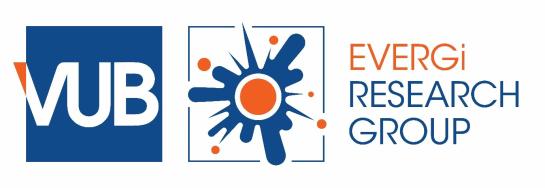
Title: Wind In My Backyard: Using holistic modelling tools to advance social awareness and engagement on large wind power installations in the EU
Call: HORIZON-CL5-2021-D3-03-05
EU nr: 101083460
Period: 01/01/2023-01/12/2025 (3 years)
Total Budget: 3,346,455 €
VUB Allocated Budget: 495,625 €
Contact: Prof. Dr. Thierry Coosemans
INTRODUCTION
We have asked Thierry: WIMBY versus NIMBY what does it comprise and what is key in this project. NIMBY versus WIMBY?
Thierry: “Factors such as restrictive regulation, disinformation, misinformation and concerns about changes to scenic landscapes, negative impacts on biodiversity, ecosystems and health hinder the spread of new wind power installations. To increase acceptance, counterbalance “Not in my backyard” (NIMBY) effects and foster support for wind power-thereby enabling its contribution to the decarbonization strategy of the EU-the “Wind in My Backyard” (WIMBY) project translates the results of cutting-edge in-depth models to assess impacts, conflicts, synergies and potentials for development of wind power into practical information. As such, WIMBY will facilitate in this way societal engagement which is key for a broad deployment of wind power across the European Union (EU). To do so, WIMBY is anchored in a transdisciplinary approach supported by a team composed of interdisciplinary research groups and specialists. For instance, our group MOBI research group at VUB combines its own environmental, socio-economic and technical competencies to address energy transition topics ranging from sustainable mobility to renewable energy communities. The interdisciplinary nature of each team also facilitates the collaboration with each other and with specialised partners such as the ecology teams, the energy law and behavioural economics team, pilot case owners, wind power industry practitioners and Web-GIS-forum developer. Such level of integration between disciplines ensures that all partners follow WIMBY’s common objectives and share language and an understanding of the issues at hand”.
Thus, Thierry, what is key to WIMBY?
Thierry: “Social science and humanities (SSH) are central to WIMBY.
Apart from the SSH component of the interdisciplinary research groups, the expertise in energy law and behavioural economics, one of the backbones of our theoretical framework, the Tenets of Transitional Justice, is to address justice issues in the energy transition (emerging from energy law, political science and human geography). Moreover, WIMBY’s core idea focuses on bringing together different stakeholders around wind energy projects, using methodologies from the SHH that allow to translate the results of holistic models into usable information for real-life applications. As SSH are indispensable to investigate the acceptance of wind power projects and better understand the citizens often suspicious views. Experience with wind projects across the EU has demonstrated that the risk of antagonising even small local interest groups can endanger their realisation and threaten the transition to a climate neutral society”.
AIM (WHAT)
Wind power is one of the fastest-growing, most mature and cost-competitive renewable energy technologies. But its deployment faces significant challenges due to a lack of understanding of the (distribution of) complex (positive and negative) impacts and their interplay with low local acceptance. WIMBY addresses these challenges by fostering the societal engagement of citizens and stakeholders so that wind energy gains substantially more popular support, thereby enabling its role in Europe's decarbonisation goals.
METHODOLOGY (HOW)
To do so, WIMBY translates the results of in-depth models to assess the potential for the development of wind parks into useful and comprehensive information and tools for stakeholders, facilitating decision making towards lower impact and more participative wind energy deployment. To thoroughly assess location-dependent potential impacts, conflicts and synergies of wind power deployment on the natural and social environment, WIMBY combines high resolution spatially explicit techno-economic models under multiple regulatory frameworks, with models to assess environmental, security and health impacts on the one hand, and models to determine potential synergies in ecosystems on the other. WIMBY follows a citizens' science approach for dissemination supported through a Web-GIS interactive forum that improves upon the content and functionality of the New European Wind Atlas. On a community level, we study four geographically, climatically and socio-economically diverse pilot cases across the EU, where detailed modelling and an immersive 3D platform and a Multi-Criteria Satisfaction Analysis framework are employed in workshops with stakeholders of potential projects.
IMPACT (WHY)
Throughout the project, WIMBY deepens the knowledge of the drivers and barriers for social acceptance and develops guidelines to raise public understanding and engagement with wind power, especially promoting the uptake of new generations of large(r) wind power turbines and farms
